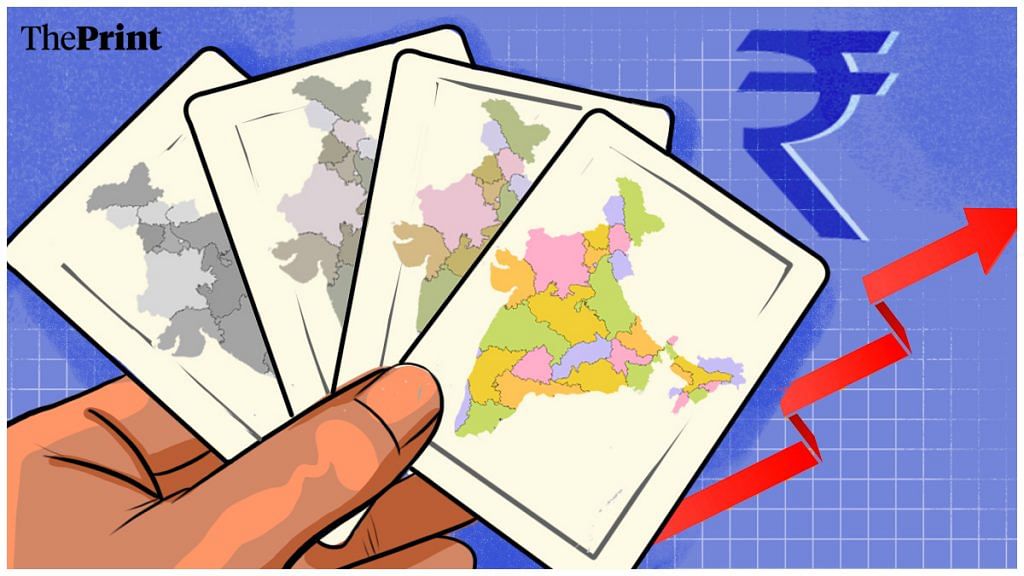The International Monetary Fund (IMF) has put out its latest numbers on the economic performance of different countries. The numbers go back to 1980, when it published its first World Economic Outlook report with country-wise data.
When one looks at comparative economic growth, tracked using current US dollars, four countries feature as the best performers of the 2011-21 decade: Bangladesh, China, Vietnam and India — in that order. (For India, 2021 means the financial year 2021-22, its last completed year.)
Only two of these four countries figured among the top performers of the previous decade, with China in the lead and Vietnam in fifth place (tying with Turkey). Remember that this period (2001-11) saw India’s best ever decadal growth performance, by far. But, as is rarely recognised, the country’s growth in that period was marginally slower than the average for all emerging markets and developing countries (EMs), a grouping that includes all but some 40 “advanced” economies.
India did unusually well when most countries were doing unusually well. In the previous two decades, 1991-2001 and 1981-91, India did either somewhat better than the average for EMs as a whole, or slightly worse.
These are relative growth rankings, not absolute growth figures. So India doing better than EMs in 2011-21 but not in 2001-11 is not inconsistent with India having slowed in the last decade, compared to the previous one. Its improved ranking reflects slower growth in the world as a whole. In current dollars, the Indian economy grew to 3.7 times its size in the 2001-11 decade, but only to 1.7 times in the latest decade.
Also read: India’s economic growth has lost momentum but slim corporate profits keep engine running
The stand-out comparative performance seems to lie just ahead. For 2022 (i.e. 2022-23 for India), the economy is set to grow 6.8 per cent whereas all EMs are expected to grow only 3.7 per cent. That gap of more than 3 percentage points over the average for EMs has rarely, if ever, been achieved, and is projected to remain substantial (2.4 percentage points) in 2023.
This is almost certainly because China’s sharp slowdown pulls down the projected average for all EMs. Meanwhile, growth for the advanced economies is expected to slow from 2.4 per cent this year to 1.1 per cent in the next.
Without saying so, the IMF seems to be signalling a “decoupling” scenario. Even if such decoupling proves to be only partial, and India’s growth numbers turn out to be slightly less flattering in 2022 and 2023, its current status as a bright spot on a dark horizon (as the IMF has termed it) seems set to last awhile.
Since India is being kept company by Vietnam and Bangladesh (not counting oil-rich Saudi Arabia as an outlier), it is tempting to suggest that the poorer late-comers are only repeating what an earlier generation of East Asian countries pulled off in previous decades, some of them (like South Korea and Taiwan) beginning pre-1981.
Such an explanation may hold even though Vietnam has a per capita income that is 60 per cent higher than India’s, and also higher than that of the Philippines (the poorest of the original Asean-5 as they are called). As it happens, the Philippines is listed just behind the top three for 2022. All four countries have been candidates for international businesses looking to diversify their production bases away from China, in the so-called “China+1” strategy.
Taking all four decades (1981-2021) together, the IMF numbers show that only three countries did significantly better than India. China was in a category by itself, multiplying its economy 62-fold (in current, not constant, dollars); South Korea was next at 25 times, followed by Vietnam.
India fitted into the pack of countries that followed. Along with four others (Egypt, Sri Lanka, Bangladesh and Taiwan), it multiplied about 16-fold, while Thailand and Malaysia were not far behind. So it has been a creditable but not an outstanding record.
Nevertheless, the country’s share of world GDP, after shrinking in the 1981-91 decade, from 1.7 per cent to 1.1 per cent, rose to 2.5 per cent by 2011 and then to 3.3 per cent in 2021, with still higher shares to come.
By special arrangement with Business Standard
